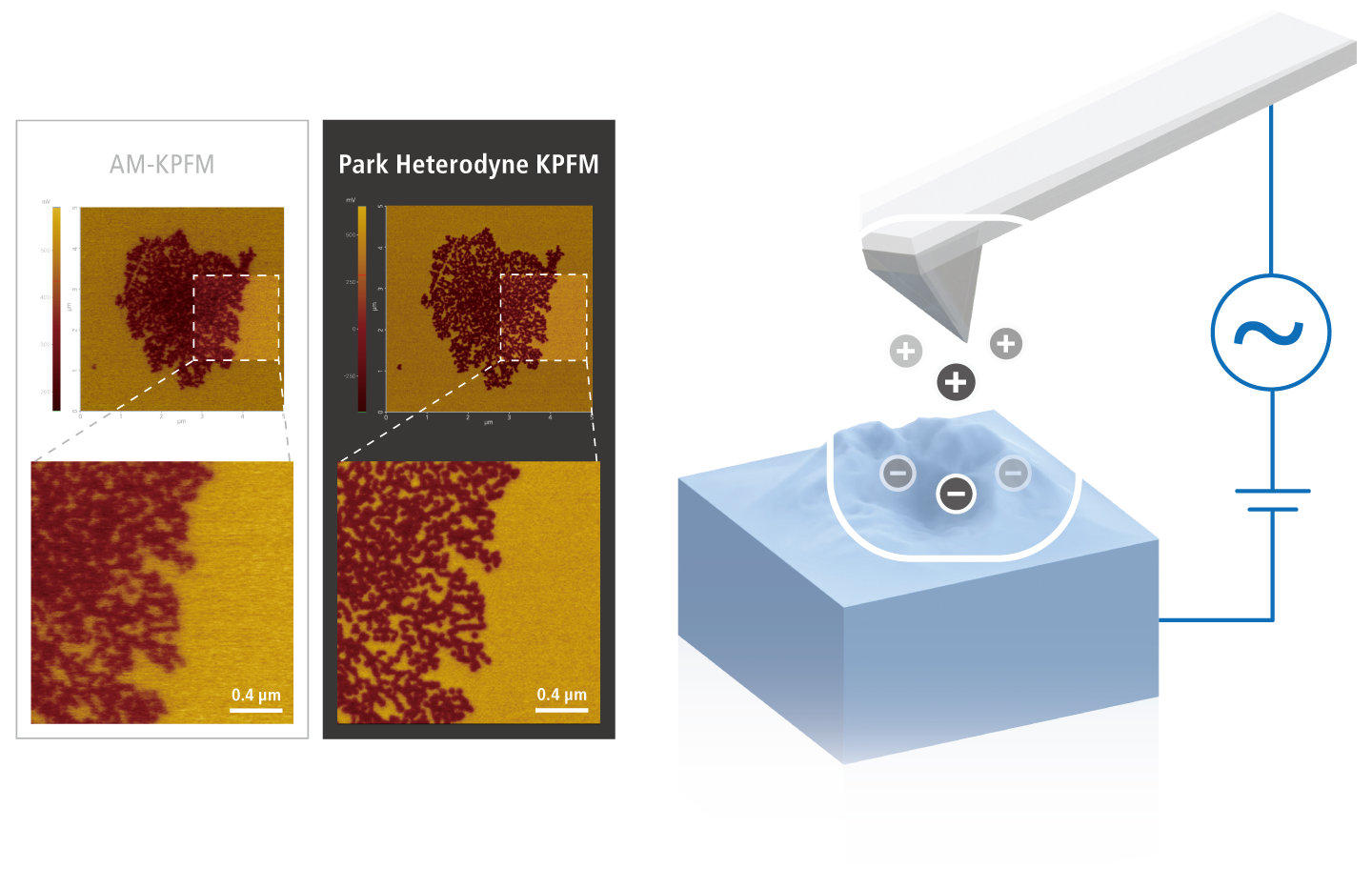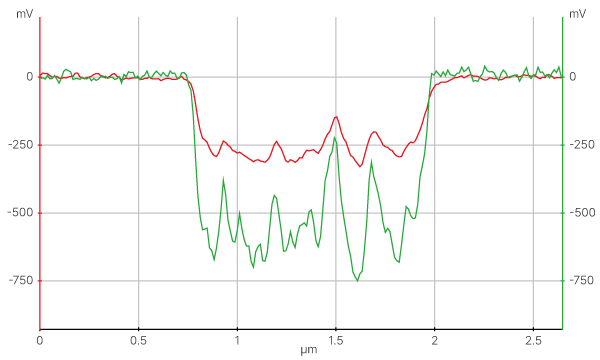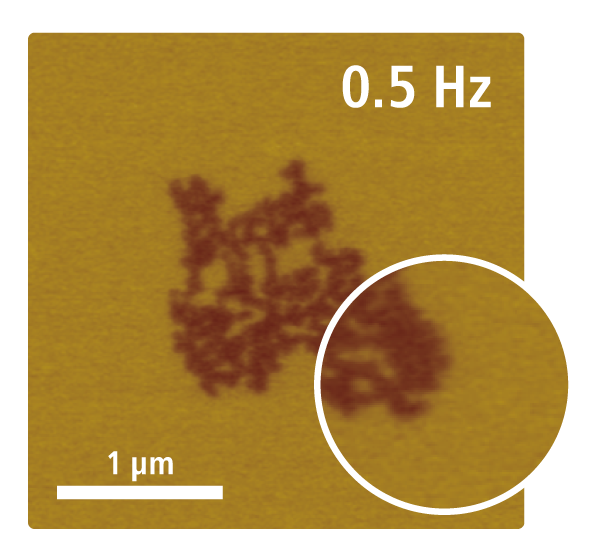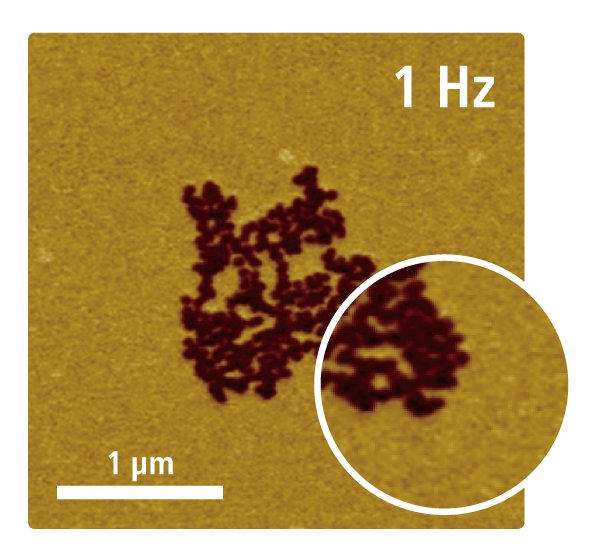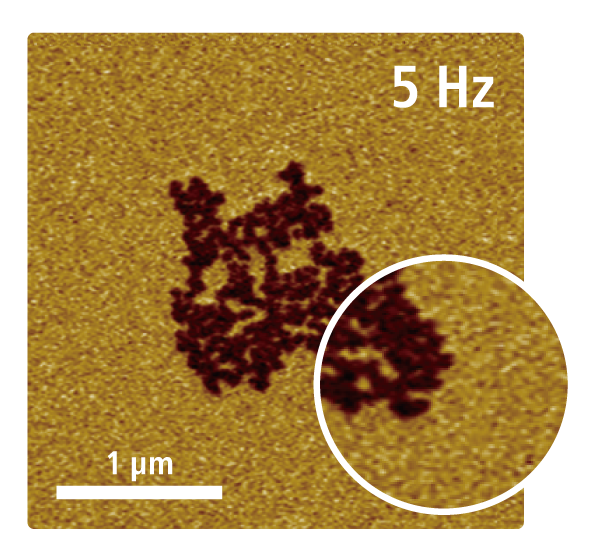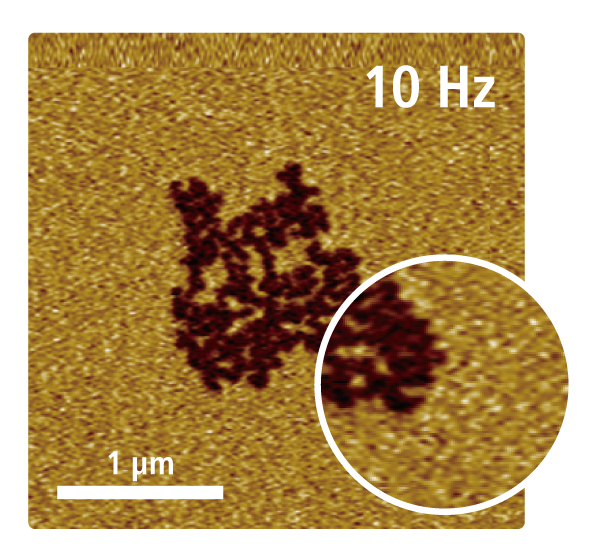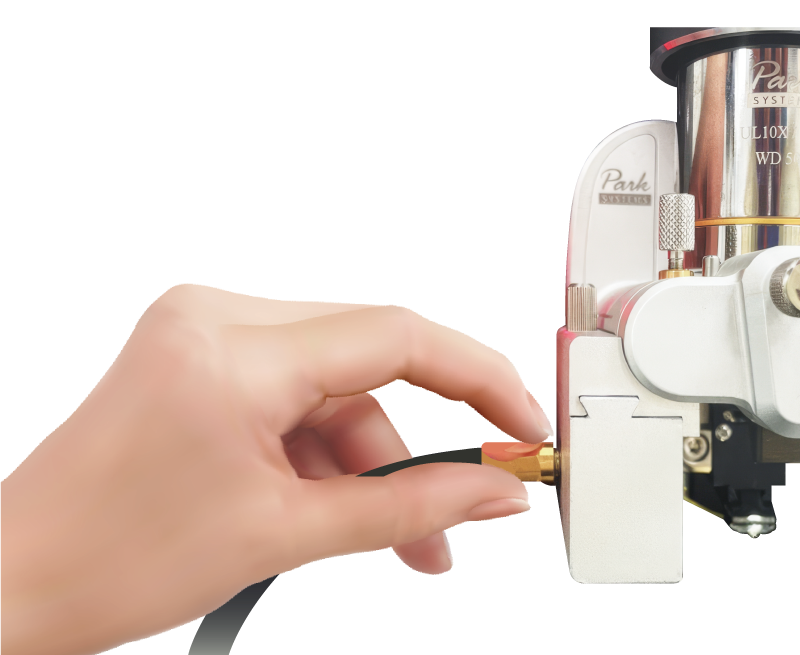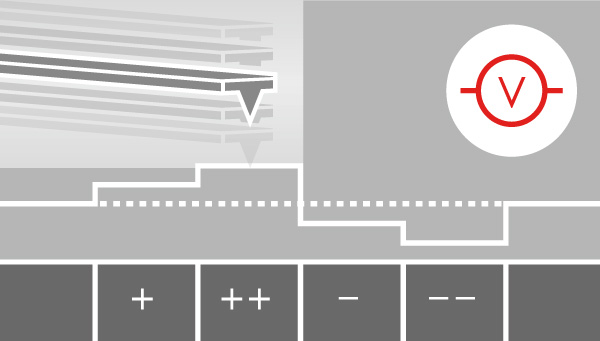
The Heterodyne Effect
How Does it Work?
Kelvin Probe Force Microscopy (KPFM) is a leading AFM technique for quantitative surface potential and work function measurement. Park Heterodyne KPFM builds upon this established technology with an innovative approach, by shifting the contact potential difference (CPD) signal away from the cantilever’s resonance frequency. This advancement significantly reduces noise and improves spatial resolution, making it ideal for high-precision surface potential analysis in applications such as 2D materials, semiconductors, and nanostructured materials.

